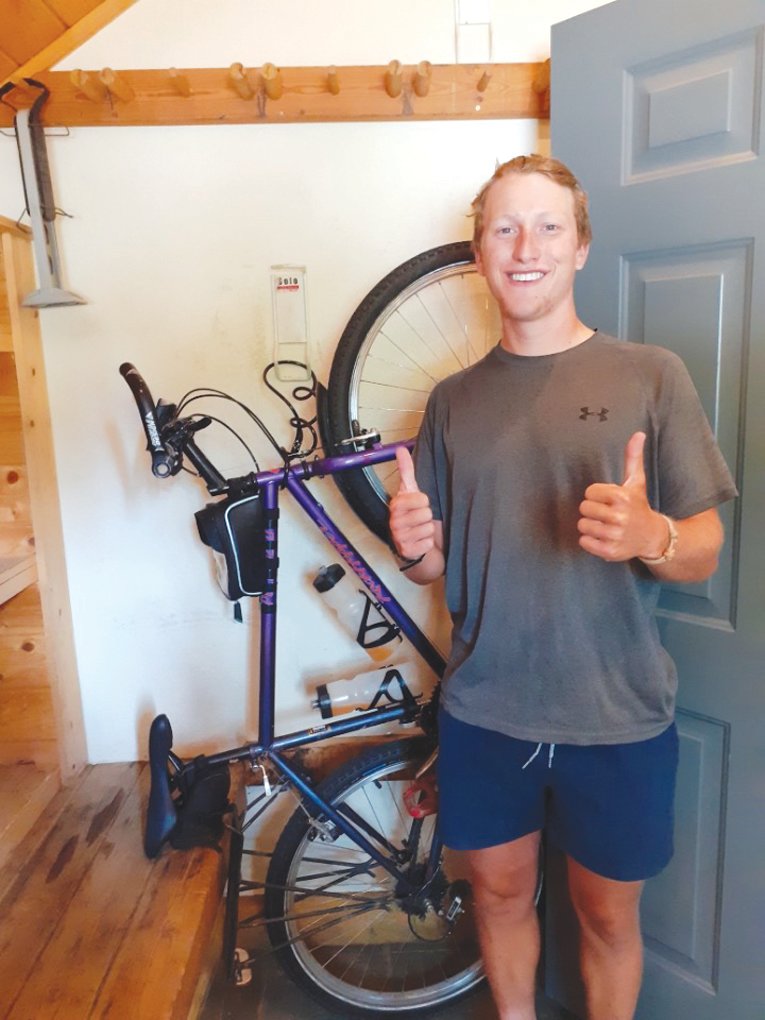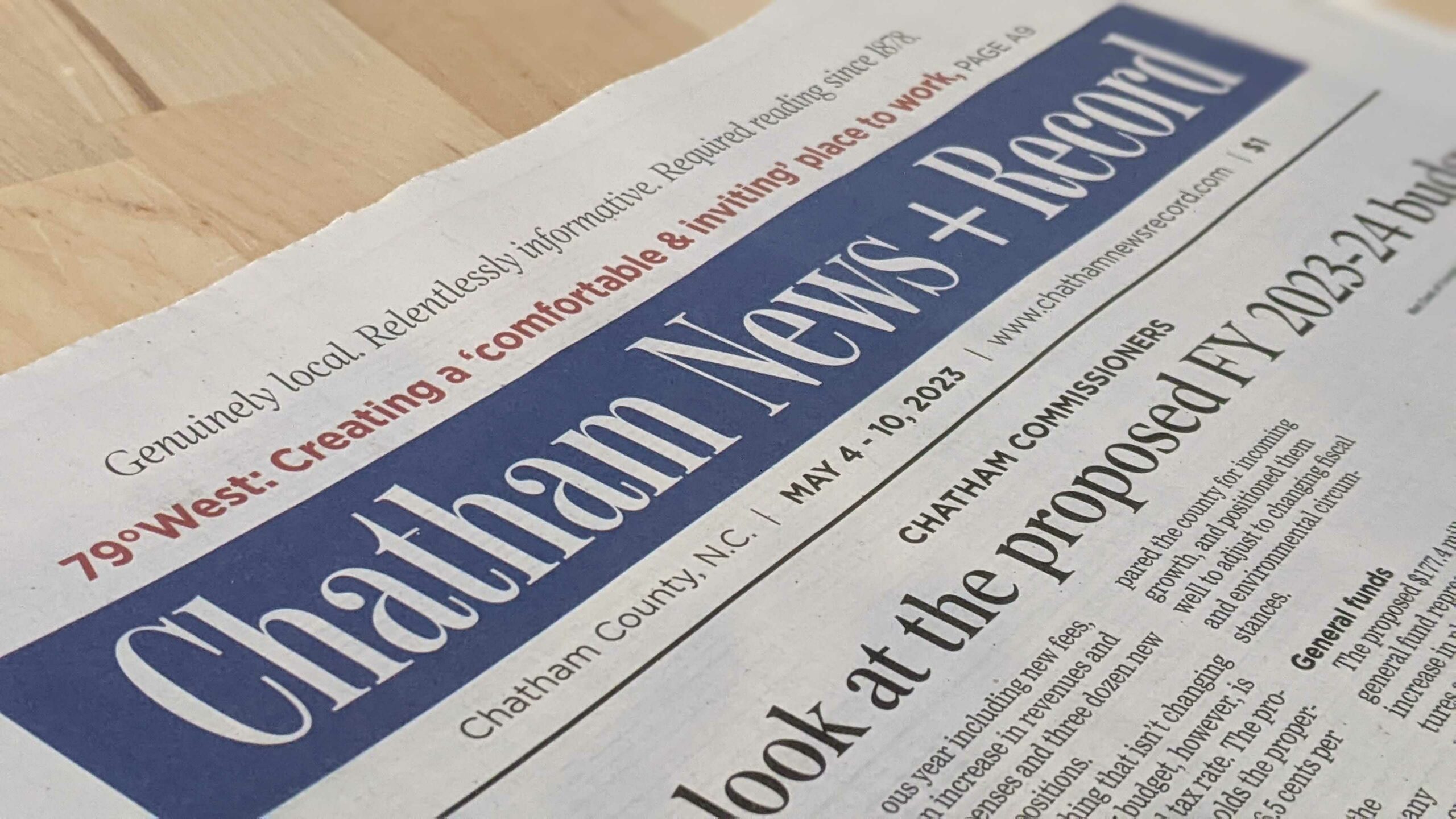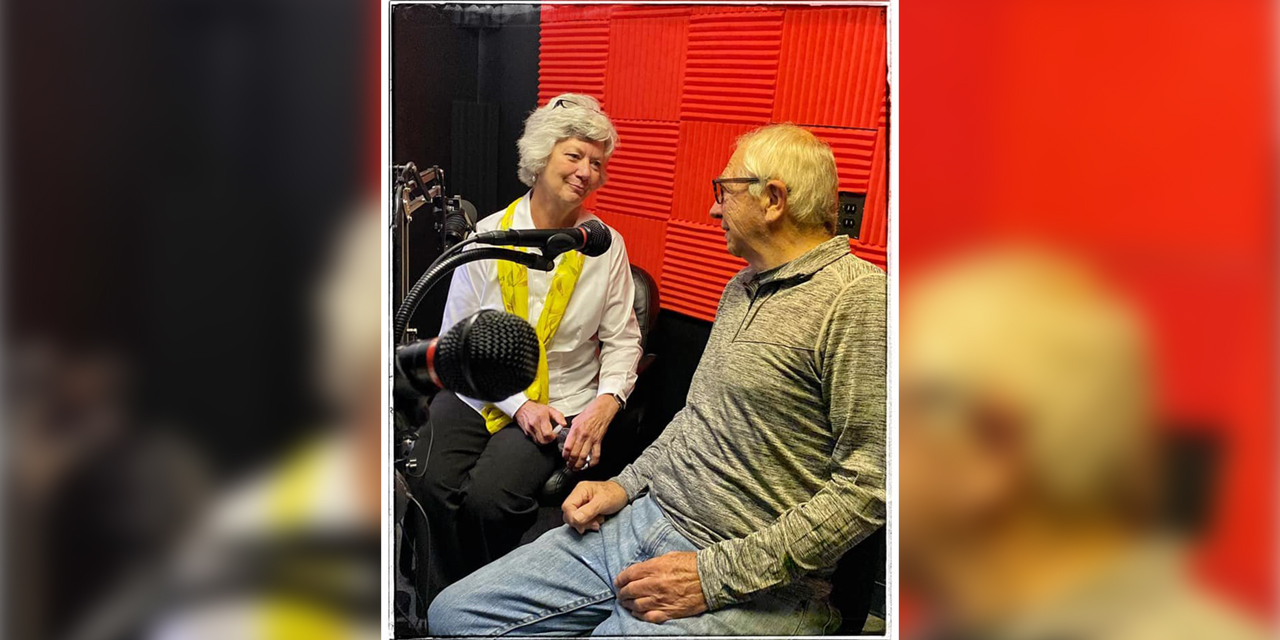![]()
By Victor Hensley, Chatham News + Record Correspondent

Greenlee said he drew inspiration for his trip from the 1994 movie ‘Forrest Gump.’
A little over 26 years ago, America became enthralled by the epic tale of a man’s otherworldly physical endurance as he ran the length of the United States several times, totaling 15,248 miles in three years, two months, 14 days and 16 hours.
That man, of course, was Forrest Gump, the title character portrayed by Tom Hanks in the 1994 Oscar-winning film.
While Gump’s journey from his hometown of Greenbow, Alabama, is entirely fictitious, for one Chatham County resident, it became an inspiration.
“It’s something I’ve always kind of wanted to do,” said Jesse Greenlee, a 23-year-old Pittsboro native and 2015 Northwood alum. “As a kid, I watched a bunch of ‘Forrest Gump’ and saw the whole running across the country thing, so I’ve always wanted to do something really long distance like that.”
So back on June 9, Greenlee set off on a cycling expedition from Charlotte with the goal of making it to Astoria, Oregon. He may have one-upped Gump by venturing via bicycle rather than on foot, but the trek was far from easy.
Greenlee’s route primarily followed the 4,228-mile TransAmerica Bicycle Trail, created by the Adventure Cycling Association in 1976 and stretching from Astoria to Yorktown, Virginia.
Each year, about 3,000 cyclists find themselves traveling along the coast-to-coast trail, which passes through 10 different states.
Because Greenlee started in Charlotte rather than Yorktown — and he had the additional plan of seeing his girlfriend, who was working in Steelville, Missouri, at the time — he had to use Google Maps to find his way through North Carolina and Tennessee before hopping on the trail in Missouri.
As it turns out, Google Maps isn’t always reliable.
“One time (my phone’s GPS) took me 10 miles deep into a military base,” Greenlee said. “It turned me onto a back road, which turned into a gravel road, which turned into a dirt path, which turned into an overgrown and rocky mountain bike path, and that turned into a ditch where I wrecked my bike.”
Thankfully for him, a utility truck with two off-duty military officers drove by and allowed him to hitch a ride with them back to the main road.
This was just one of many obstacles — or “ordeals,” as he describes them — Greenlee faced throughout the trip.
On average, Greenlee traveled about 70 miles per day, sometimes going as few as 50 or as many as 120.
Early on, he would often push himself toward that 100-mile mark, often without concrete plans about where he might finish for day. That led to him stopping for the day in the middle of nowhere, camping in unideal places and experiencing burnout, a common feeling among cyclists who overwork themselves.
“The first time I really felt burned out was when I got to Nashville, Tennessee,” Greenlee said. “I was getting kind of cranky, and there was just so much distance in front of me at that point, it felt like I barely made a dent in the mileage.”
Greenlee called his parents to vent, leading him to take a couple of days’ hiatus in Nashville. It gave him the chance to rest, regain his energy and gear up for the next 3,000-plus miles.
The burnout he experienced in Nashville acted as his wake-up call and forced him to realize the importance of planning. From then on, he made sure to arrange stopping points in areas where he could find a place to set up camp, grab food and buy coffee in the morning. He also lowered the number of miles he traveled each day.
‘A different kind of motivation’

Northwood alum Jesse Greenlee, 23, set off for the trip of a lifetime on June 9.
For a majority of the trip, Greenlee biked solo.
Each day, he would get up around 7 a.m., eat breakfast, bike about 70 miles, stop somewhere to eat and set up camp, go to sleep, then wake up the next day and do it again.
He stayed in parks, campsites, national forests, strangers’ backyards (with permission), churches and hostels when they had space available. Because of the coronavirus pandemic, however, many hostels were either closed or only open at limited capacity. COVID-19 also affected how he ate.
“If I did want to eat at a restaurant, depending on what state we were in, it wasn’t an option,” Greenlee said. “Even to go to a fast food place, I had to bike up to the drive-thru instead of being able to go inside. I went to Burger King once and rode up with my bike fully loaded, and they just had to do a double-take.”
It took him until he reached Kansas, more than 1,000 miles into the journey, before he saw another cyclist making a similar trek. Excited to see someone else on the same type of adventure as him, Greenlee took pictures of the man and spoke with him for half an hour.
When he reached Colorado, cyclists became more frequent, though most, if not all of them, were going in the opposite direction.
He remained on his own until he arrived in the small town of Dubois, Wyoming — population 768 — where he found three people that completely changed his journey.
Two of them, Kenneth and Alli, are a couple who met while hiking on the Appalachian Trail last year and were also making the trip to Astoria. While passing through Missouri, they had met another cyclist, Athena, who joined them.
The four of them clicked almost instantly, becoming what Greenlee called “a unit.”
After Greenlee joined the group, they took a detour to Jackson, Wyoming, where they took a small break from cycling to go on a whitewater rafting trip. For the first couple of days with his new group, Greenlee felt a little like an outsider, but that feeling didn’t last long.
“I was enjoying traveling alone, because it takes a different kind of motivation and thought process to do it, but it was cool to have the balance of finishing in a group setting,” Greenlee said. “There’s people to socialize with, people to split expenses with and just joke around with and get closer to.”
Along the TransAmerica Trail, many people and places aren’t afraid to open their arms — and homes — to cyclists because of how often they encounter them. As the group climbed down from McKenzie Pass in Oregon, a mountain pass at an elevation of 5,225 feet, they came across a man named Oscar who was intrigued by how far they’d traveled.
Greenlee mentioned that the group would be in Eugene, Oregon, the following day, which happened to be where Oscar lived. He extended an invitation to his home and the group biked about 70 miles that night to Eugene to stay with him.
“They had so much food cooking for us,” Greenlee said. “I was eating for a solid hour. It was kind of like we were an addition to the family. That was really great, the most hospitality I’ve ever experienced.”
‘A lot of fortitude’

To Greenlee, Wyoming’s Grand Teton National Park (pictured here) was the most beautiful place he visited on his trip.
From Eugene, the group made the 200-mile journey to Astoria, the trail’s final destination. They bought bottles of champagne, celebrated on the beach and reveled in what they had accomplished.
The trip, however, wasn’t exactly over. They had made a plan to visit Greenlee’s sister, Sara, in Portland, nearly 100 miles from Astoria.
Two days later, on August 20, they arrived in Portland. After 73 days of planning, biking, camping, sightseeing and overcoming adversity, Greenlee had done it. He’d traveled the length of the United States on a bicycle.
“Portland was more the final destination for me, so that morning, it felt kind of weird,” Greenlee said. “Because for the past two and a half months, when I was biking, it was kind of a lifestyle. You wake up, you eat, you bike, you eat and then you go to sleep. And then going from that to being done, it was like, ‘Now what do I do?’”
Greenlee considered adding another 800 miles to his trip because the group was riding down to California, but funds were running low, so he decided to split off from them and head back to Charlotte. He rented a car — made possible by his friends from home, who pooled together $500 to help fund his way back — and pointed it easy, driving home for the first time in months.
When discussing his trip less than a week after arriving back in N.C., Greenlee was already excited for what might be his next adventure. He wants to complete both a triathlon and a marathon, along with the triple crown of hiking: the Appalachian Trail, the Continental Divide Trail and the Pacific Crest Trail.
“He has a lot of fortitude,” said Kathy Greenlee, Jesse’s mother. “If he sets his mind up to do something, he’s generally going to pull it off. He’s fine with just living very simply and putting his money toward experiences rather than material items.”
Throughout the journey, Greenlee encountered a plethora of things that would make most people throw in the towel. He had two major mechanical mishaps with his bike, weathered an extreme storm in Kansas, carried his belongings three miles in the mud (also in Kansas), endured threats from motorists and withstood the scorching mid-summer heat while cycling 70 miles — or more — nearly every day.
But he never faltered.
“You can’t prevent everything from happening, so just believing that I could handle whatever came, that was the mindset I went into it with,” Greenlee said. “I want to try and center my life to where I can do more of these kinds of adventures, rather than making other things the main focus. I’m trying to gear everything I do towards becoming who I want to be.”
Chapelboro.com has partnered with the Chatham News + Record in order to bring more Chatham-focused stories to our audience.
The Chatham News + Record is Chatham County’s source for local news and journalism. The Chatham News, established in 1924, and the Chatham Record, founded in 1878, have come together to better serve the Chatham community as the Chatham News + Record. Covering news, business, sports and more, the News + Record is working to strengthen community ties through compelling coverage of life in Chatham County.



